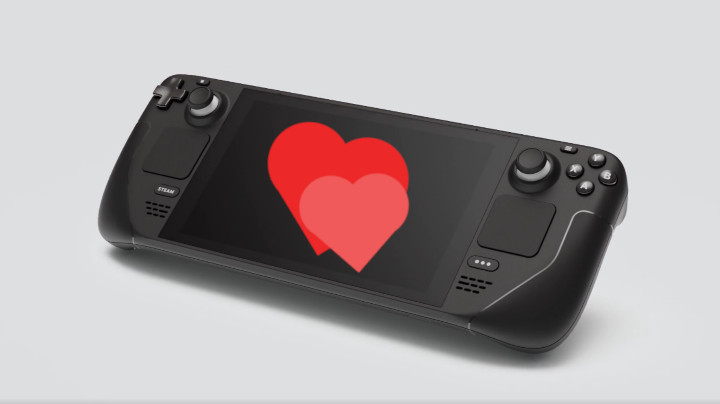
Valve announced the Steam Deck, its new Linux-based handheld PC, back in July of 2021. Based on the form factor alone, there were immediate and perhaps unavoidable comparisons to Nintendo’s immensely popular handheld-hybrid Switch console. And even though the Deck dwarfs the Switch in size (something that helps in making the Deck a far more capable machine in terms of power), the general similarities in shape alone is really the only thing these two machines really have in common (other than some of the games that both systems can play, I suppose).
To be clear, both machines do their “thing” extremely well. But where they diverge is that the Switch is simply a Nintendo console with limited processing power, whereas the Steam Deck really is a “pocket PC” (if perhaps you still happen to wear JNCO Jeans).
Like every other Nintendo-produced console before it, the Switch is first and foremost a machine for Nintendo’s first-party lineup. Do you want to play Zelda, Mario, Kirby, Animal Crossing, Mario Kart, Metroid, or perhaps eventually a new F-Zero? Well, then you are going to need a Nintendo device, which currently — and for the foreseeable future — means you need a Nintendo Switch.
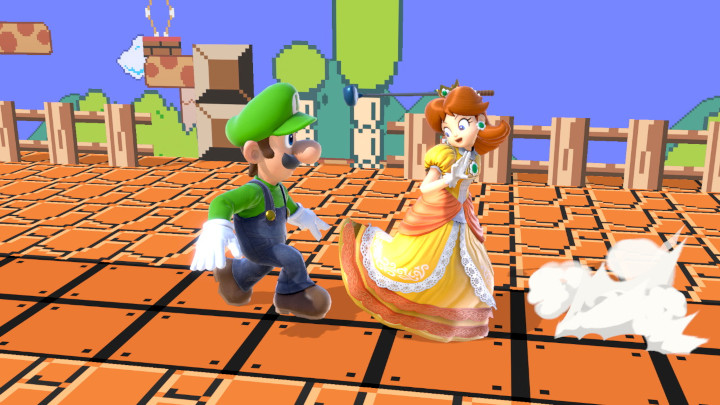
Obviously, the Switch also plays a myriad of games outside of Nintendo’s first-party ecosystem — many many games in fact. It is a haven for RPGs and indie games, which all seem to perform very well on the system’s Nvidia Tegra chipset. I should point out that this wasn’t always the case; the Nintendo Switch was something of a third-party wasteland in its early days.
To its credit, Nintendo has done a pretty good job courting third-party developers since those early days, landing ports of really great contemporary games like Hitman 3, Doom, and Wolfenstein. They’ve even managed an admirable — if not also limping — port of Cities Skylines. Of course, most of these bigger or newer third-party games are either cloud-based or lower-res versions, which either require an internet connection or come with some performance sacrifices.
For me, though, I don’t much care for Nintendo’s first-party lineup outside of Breath of the Wild, which I did have a good time playing (despite my criticisms). Since I don’t do a ton of on-the-go gaming and have better versions of every game I would play on Switch available on my PS5, Xbox Series S, or gaming laptop, I simply just am not the targeted market for the Nintendo Switch. I own one, of course, and had previously, tirelessly sought out games on it that were within my wheelhouse. But most of the time, it just never was what I wanted it to be: a dedicated option chock full of games I wanted to play.
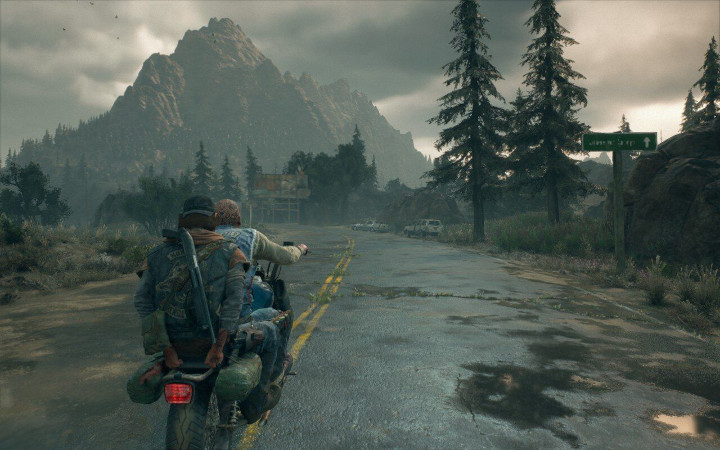
But after spending the better part of a week with my new Steam Deck, I finally feel like I get what people love about the Switch.
And although I have yet to come home from a hard day of work and sit down on a bench in the foyer of my home to play a quick round of something, or sparked an impromptu multiplayer session while on the B-ball court or while commandeering a group of millennials at a rooftop party, I have played Days Gone on my Steam Deck both in the bathtub and on the toilet. I have also played Medieval Dynasty while lying in bed. I played Grand Theft Auto IV while doing irreparable damage to my posture slouched on the living room sofa. Heck, I even played Condemned: Criminal Origins in my backyard while lounging on a lawn chair while enjoying a Big Wave Kona golden ale.
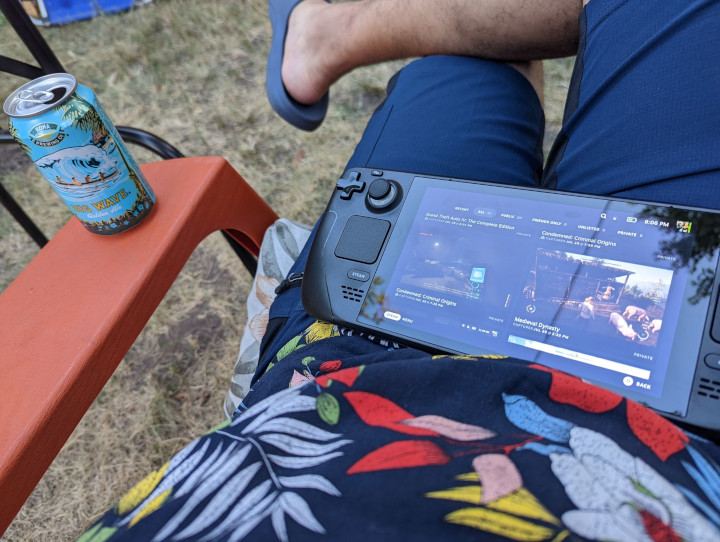
So far, the Steam Deck has been mostly an enjoyable and hassle-free experience. And although I waffled a bit when I received my purchase offer for the 256GB model, and felt a bit like I had perhaps made an unwise purchase after pulling the trigger, that feeling and trepidation gave way once I had successfully downloaded a number of games from my Steam library and was holding the Steam Deck in my hands.
In the case of Skater XL (there was supposed to be a Switch port that has yet to materialize), busting some tres and gleaming some cubes felt great thanks to the Deck’s solid analog sticks. And it looked and ran flawlessly, with little to no frame dips, at least as far as my untrained eye could tell.
That’s actually the one thing that has stuck out the most to me about gaming on the Deck; even a larger game like Days Gone looks absolutely stunning on the Steam Deck. And since this is basically just a really small PC, you get to take advantage of PC-centric settings and features that are not present on consoles. Like being able to adjust the field of view, giving yourself a tighter or wider berth to accommodate your personal preferences. Or being able to fidget with the resolution and graphics settings based on the options each game offers. Cue the “mind blown” .gif…

You can also adjust the frame rates and even toggle a few options in the Deck’s settings menu to diminish visual quality slightly in order to help get better battery life or to boost FPS. I haven’t messed around with this a whole lot, since every game I’ve tried thus far has run great from the jump, but the option is there should the need or desire arise. There is even a night mode, which dims the screen and adds a sort of orange tint to help with screen glare for those late-night gaming sessions.
Now, a lot of hay has been made about the high-pitch whine of the cooling fan. From what I can gather, there are two different fan models that Valve uses, one being quieter than the other, with no way of gauging which one your Deck will have in it until you fire it up. So it’s possible, if this is in fact true, that I may have lucked out and gotten a Deck with the quieter fan. So far, noise hasn’t been an issue, especially when compared to the fan in my gaming laptop, which can sound like a jet engine at times.
You can purchase a quieter fan from iFixit (as well as a number of other replacement components for the Deck) if you just can’t stand the noise and want even a slight bit of reprieve. I actually preemptively ordered a kit myself just in case, but so far I don’t feel the need to install it.
I will say, though, that the amount of heat radiating out of the air vents on the top of the unit has been surprising. This means you’ll have to put in some thought when placing the Deck on a soft surface, or when holding it with the vent pressed against your skin. It gets pretty friggin’ hot. The vent on the bottom isn’t nearly as bad, thankfully, since that one usually rests directly against my belly.

Unfortunately, at the time of this writing, only a handful of the games in my personal library are Deck-verified, with several more labeled as playable but not completely optimal, and the rest (a vast majority) of my library unsupported or untested.
Now, just because some of these games are not verified or are unsupported doesn’t automatically mean they are unplayable. It could simply mean they are not a high priority so Valve hasn’t bothered to test them yet — in fact, they might never, if we’re being honest. I can’t imagine Marc Eckō’s Getting Up: Contents Under Pressure is lighting up the charts these days — at least not enough to warrant any real effort or action to get it Deck-compatible. And to be honest, it never supported a viable controller option to begin with, so I’m not surprised it doesn’t work on the Deck.
A good rule of thumb — for me, at least — has been that, if the game has more key bindings than one can comfortably map to a controller, it will more than likely not be a good fit. Or another way to put it, although also not a hard and fast rule, if there is a version of this game that previously had controller support, it should work just fine. You can also go into the controller tab for the game to look for any user-uploaded controller mappings so you can simply select which will be programmed into the game once you boot it up.
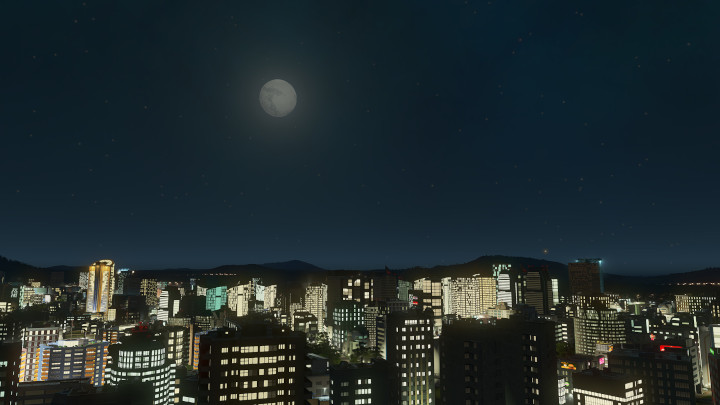
Although for a game like Cities Skylines, even though there is a console version with full controller support, the PC version does not take into account using a controller for, say, the right analog stick to control the camera like in the console port. And oddly enough, the recommended default controller mapping the game comes with didn’t work for me — like, at all. None of the buttons, analog sticks, or track pads did anything once I booted up the game. After messing around with a few of the user mapping options, I was able to get it to work, but since the PC version doesn’t offer the option to use the right analog stick for camera movement, I had to use both track pads or a combination of the right track pad and D-pad or shoulder buttons to control moving the camera. At the end of the day, it was just too cumbersome and foreign so I gave up, much to my personal chagrin. I might go back at a later date, but for now I admit defeat.
I also find that the Deck isn’t a good fit for most of the survival games in my library, which require a dozen or more keystrokes to completely interact with them. Games like Mist Survival or SurrounDead are pretty much unplayable by default, since you need more inputs than the Deck has on offer. It is always possible (although in some cases unlikely) that developers could rig some of these games to work on the Deck specifically. But even with the extra four paddle buttons on the back, button real estate is still kind of tight on the Deck, and it’s still difficult to overlap inputs.
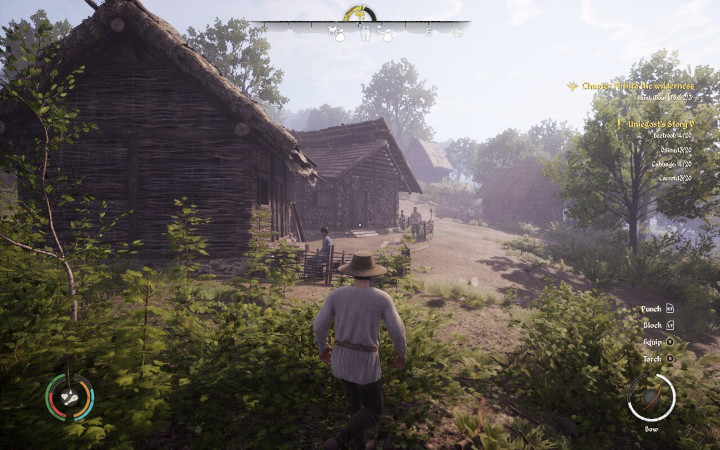
Project Zomboid immediately comes to mind as a great example, as it has a large number of inputs bound to a ton of keys. Yet the developer figured out a proper way to map the game to the Deck control scheme (even more so than to a controller in general via the desktop version). As a result, Project Zomboid runs incredibly well on the Deck. In fact, I feel like the hurdles I had while trying to play it on PC are gone now; on the Steam Deck, I can totally see sinking a ton of hours into Project Zomboid and enjoying my time doing so.
And to circle back to a game I mentioned earlier, Condemned: Criminal Origins, a game that originally launched on the Xbox 360, is a perfect fit for the Deck. You can run that game at max settings with the resolution pumped all the way up — in conjunction with the smaller screen really making it look incredibly crisp — and get perhaps the best version of the game.
This is actually one of the better features of the Deck, and it’s something I wish the Switch did more of: running Gen-6 or Gen-7 games incredibly well, if not even better than the old consoles I had originally played them on. Grand Theft Auto IV looks stunning, for example, and it runs pretty well. This has me looking forward to trying a slew of older titles in my library, like Batman: Arkham Origins, Prey (2006), and Far Cry 2. Even though the built-in controller mapping wasn’t all that great on the desktop, Driver San Francisco is something I’m excited about trying on the Steam Deck.
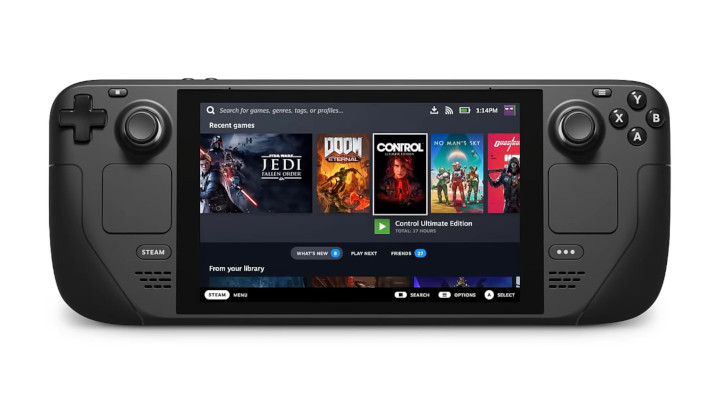
The Steam Deck has a way to go yet before it realizes its true potential, but there have already been steps taken in the half year it’s been in the wild. Valve seems determined to push it even closer to becoming the system I personally hoped it would be. In fact, by and large, it’s already almost there. Almost.
It will be up to Valve and third-party game developers to get more games verified on the Steam Deck, and also to hopefully push for more and more new games to keep the Deck in mind. Deck-verification is something that now factors into whether or not I buy a game, since the Deck is pretty much my go-to rig for PC gaming now. This will more than likely continue to be the case going forward.